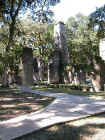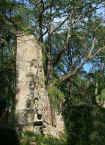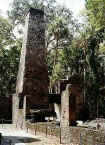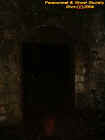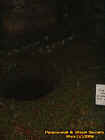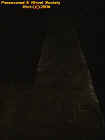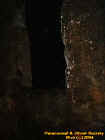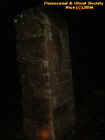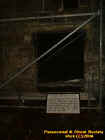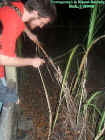|
|
||
|
Bulow Plantation was started back in 1821 when Major Charles Wilhelm Bulow acquired nearly almost 5,000 acres of land bordering a tidal creek and Tomoka as well and it bordered the Halifax Plantation as well. So this plantation was definitely very large in size some say it was more like a small village. Bulow cleared 2,200 acres of his land using slaves and planted crops such as Sugar Cane, Cotton, Rice and Indigo which was very common locally in other plantations. So basically half of his land was used to grow various crops. Strange enough after the plantation became very productive Bulow died at the young age of 44 years old. The only heir was his son John so he acquired the plantation. John was a very skilled plantation manager he increased production and perhaps out of all the plantations in the area Bulow Plantation was more productive then any of them on the east coast of Florida with over 300 slaves. John James Audubon visited Bulowville in 1831 while on a specimen and painting collecting trip in the state of Florida. He said that John Bulow was a hospitable man and a very rich planter. He was intrigued with perhaps the nice treatment he received during his visit. Audubon is very well known across the country. In 1835 the second Seminole War had broke out there was a lot of fear amongst the plantations as hostility grew from the Seminoles. Bulow was a man who did not agree with the removal of the Indians to the west of the Mississippi. He was so displeased that when the Mosquito Roarers commanded by Major Putnam entered the plantation Bulow fired a four pound cannon at the militia. He was then taken temporarily as prisoner. The militia overtook the plantation and used it as a military outpost to wage war with the local Seminole Indians. The effort was unsuccessful and the militia relocated to St. Augustine as most of the troops strangely fell ill of yellow fever and dysentery. John Bulow was released and that year with tensions rising he abandoned his plantation. Despite the fact he sided with the Seminoles the Indians thought otherwise since Bulowville plantation was used as a military outpost which was out of Bulow's control. In 1836 John Bulow abandoned his prosperous plantation and the Seminole Indians burned 16 plantations including Bulowville along the Halifax & St Johns Rivers. Bulowville served as place for refugees as other plantations in the area were burnt and raided. John Bulow went to Paris France after the destruction of the plantation and three months later he died at the age of 26. So we must question ourselves did the Seminoles put a curse on the planters and militia? Or was this a mere coincidence. Today
if you were to visit the plantation nothing is left except the coquina
ruins of a sugar mill, several wells, a spring house and the foundations
of the mansion. The slave cabins, sawmill, barns, hogsheads, and curing
room no longer stand. The fields of Sugar cane and cotton no longer grow
since the whole area is very forested and contains a lot of vegetation.
Strangely enough the land looks very much like when the Seminole Indians
roamed these lands. So perhaps the burning of the plantations in a way
preserved the Seminole tribe in some way and proof of this would be the
Giant forests where these ruins now sit today. There is many surprise along the woods and the trails that run throughout the area. Their are rumors of some sort of swamp monster. We may have encountered it we are not sure on our second investigation. But when something can shake a giant oak tree from its roots, cut through brush at great speeds and appear in different areas in a matter of seconds that tells me more then ghost lurk these woods perhaps something Cryptid is here. We do hope to return again to bring you future stories and more history as we gather information.
Rick-AngelOfThyNight
|
||
|
|
|





